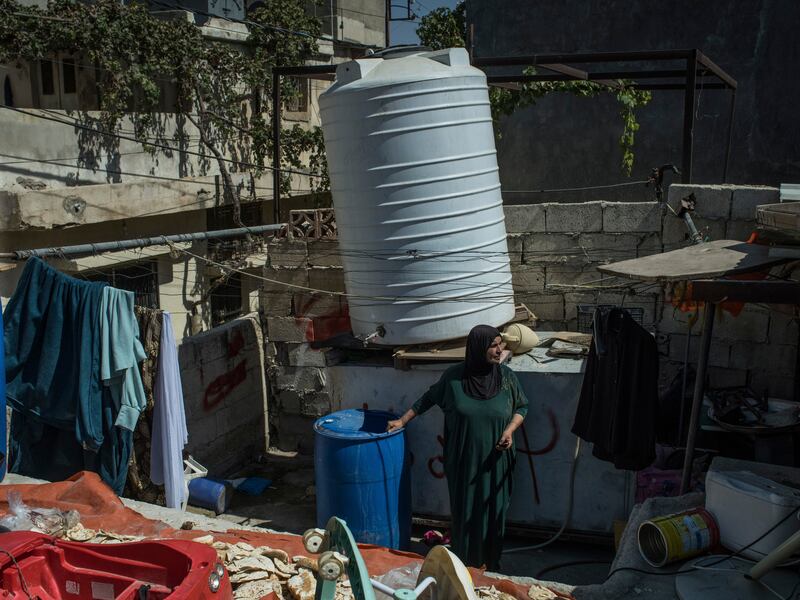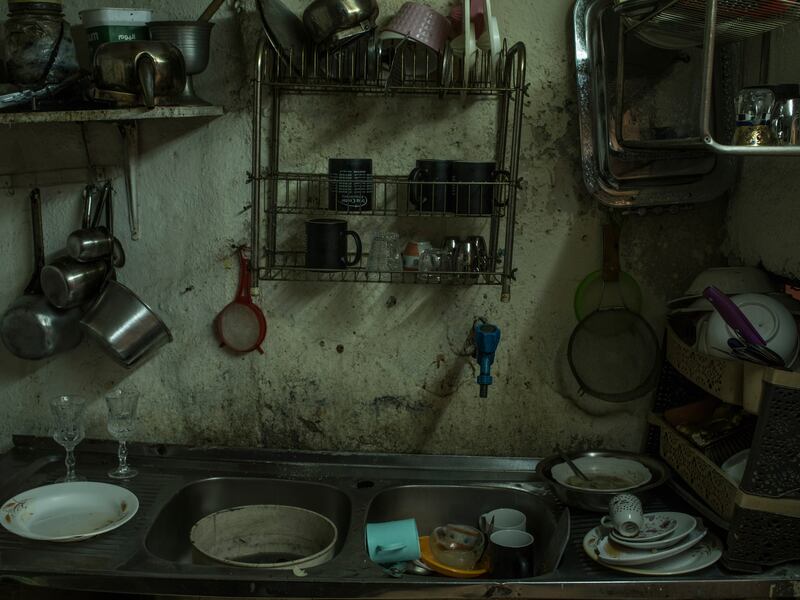Residents of Jordan, one of the driest countries in the world, have long been accustomed to a household water supply of only about 36 hours a week. But recently, even that meagre flow has been curtailed by the debilitating combination of a warming planet and swelling demand.
Rajaa al-Bawabiji (64), like many others in the capital, Amman, plans her days accordingly. A human rights lawyer during the week, on Fridays she turns into a domestic marathoner, frantically cleaning, washing clothes and cooking three big meals during the brief window when the water flows.
But household taps ran dry this summer for as long as three weeks in parts of this small, dehydrated Middle Eastern nation. By early summer, when her taps did not spring to life on schedule, al-Bawabiji said she feared more outages were coming.

Everyone was anxious about water, she recalled. So she bought a second tank for her roof and chipped in with her neighbours to fill it with water purchased from a private water tanker business.
“If you want to feel free, you need three tanks,” she said with a sigh.
Population growth, diminished water supplies and climate change have all taken their toll, while damaged and inefficient infrastructure and the considerable challenges posed by Jordan’s geography and topography have only made things worse. The resulting shortages serve as a warning of what the future might hold for the region and the world beyond it.
All of the country’s major water sources are near the borders, and water must be transported inland, an energy-intensive and increasingly expensive process as fuel prices rise. Rainfall has decreased precipitously in recent decades, and warmer temperatures mean that what rain does come evaporates rapidly. Longer and hotter summers have already shortened growing seasons for farmers.
“Climate change is really aggressively hitting Jordan in the last two years,” said Motasem Saidan, a former water minister and professor at the University of Jordan.
The country’s namesake river is nearly running dry. The flow in the Jordan river is less than 10 per cent of its historical average, and the Yarmouk river, a major tributary, is greatly diminished. The Jordan’s once-rushing waters feed into the Dead Sea, a saltwater lake that is disappearing.
The rivers are uneasily shared with neighbours: Israel and Syria upstream have diverted water for years for their own use. Increasing supply from these sources is challenging, particularly with Israel, which has had a chilly peace with Jordan for decades now.
All of this has led to an over-reliance on extracting groundwater from aquifers below the Earth’s surface. The aquifers are being drained at roughly twice the rate at which they can be replenished naturally and now account for about 60 per cent of the country’s water supply.
Omar Salameh, a spokesman for the ministry of water and irrigation, said the government was well aware of the dangers of exhausting the groundwater supply. But as the population has grown – in no small part because of waves of refugees from Syria and other countries facing conflict – the government has come under pressure to meet soaring demand, he said.
The population is now estimated to exceed 11 million, up from eight million just a decade ago, including more than 760,000 people registered with the United Nations as refugees.
“We don’t have other alternatives,” Salameh said.
For those with means, solutions and workarounds are available, at a price. But those without must simply go without. Many Jordanians turn to private water tankers. But the prices charged by those tankers, which are ubiquitous in wealthier neighbourhoods of Amman, rose to new heights this past summer. Buildings and homes keep water tanks on the roof, which are replenished by the government and rationed through the week. Wealthier households often have multiple tanks, which they can also fill with water purchased from the private trucks.
The vulnerable are hardest hit by the water shortages. The poor cannot afford to buy from private trucks and have less capacity to store water. All households have to buy their own tanks, and if one is damaged, the consequences are dire.


Ibtisam Yousef Abdelrahman (55), a Palestinian who lives in the Wihdat refugee camp in southeast Amman, shares a two-room apartment with her husband, daughters and two grandchildren. They received a new tank from Unicef during the pandemic to replace a damaged, rusty steel one. But in mid-September, the Unicef tank broke, and the precious water gushed into the street.
“I started crying, running around the neighbourhood,” she said. “Now there’s no water, and I worry.”
Without the ability to save water for use throughout the week, she is back to going around to her neighbours with a bucket, imploring them to share. Her family is skipping showers and forgoing cleaning. She shrieks every time someone washes their hands, admonishing them not to waste a drop.
The average amount of water available each year to a resident of Jordan is well below the “absolute water scarcity” threshold of 500 cubic meters set by the UN. Salameh said it is about 80.
Desalination is a promising lifeline for Jordan, but it will not happen quickly. A large-scale desalination project in the port city of Aqaba on the Red Sea is in the works, but it will take years.
There is one potential quick fix: buying more water from Israel, a pioneer in desalination techniques. Co-operation on water was an important element of the 1994 peace treaty between the two countries, and they signed a water-for-energy agreement at the UN climate conference in the Egyptian Red Sea resort of Sharm el-Sheikh last Tuesday.
Protests broke out in Amman last year when the plan, which was brokered by the United Arab Emirates and would involve Jordan sending solar energy to Israel in exchange for water, was first announced. An over-reliance on Israeli water is unpalatable to many Jordanians, who oppose the occupation of the Palestinian territories.

But water is a critical national security issue in Jordan, and shortages threaten to destabilise a stalwart US Arab ally that has been an oasis of calm in a turbulent neighbourhood. Iyad Dahiyat, a former water ministry official, said the water portfolio is as important as the military given the threats to Jordan posed by climate change.
One recent study predicted that severe and potentially destabilising water shortages will become common in Jordan by 2100 unless the country makes significant changes.
“The government needs to increase supply to communities to limit discontent,” said Sandra Ruckstuhl, an American researcher based in Amman and a senior adviser at the International Water Management.
Ruckstuhl and other experts say the government needs to raise water prices based on household income to account for the soaring cost of delivering it to homes and businesses. But many Jordanians are already struggling with unemployment and high prices, and that would be an added, and unpopular, burden.
Choosing crops wisely and managing water are crucial for Jordanian agriculture as climate change accelerates. The sector once used about 70 per cent of the country’s water supply, though it contributes relatively little to the gross domestic product.
Use has decreased to about 50 per cent, which Salameh cited as a promising indicator. But many farmers still focus on water-intensive crops that are becoming more difficult to grow. Khaireddin Shukri (68), is a retired farm owner and a consultant who has long pushed for crops that require less water and bring in more money. He said the water issue revolves around planning and pointed to inefficient practices and waste.

“It’s a country with huge potential but lack of management,” he said of Jordan.
On a visit to a date farm that Shukri helps oversee, he showed off the crop that he has championed for years: Medjool dates, which can tolerate salty, lower-quality water, and garner high prices.
Yields at farms in the area were small this summer because the fields received less water and what did come was saltier than usual. At one farm, they grew only half of the more water-intensive crops like eggplants, tomatoes and peppers that they sell to international supermarket chain Carrefour, Shukri said.
At an olive farm, his team faced an unusual case of water theft during a heatwave, and by the time they restored the water supply, they had lost the whole crop.
“You lose a crop, you lose a year of your life” Shukri said, shaking his head.
– This article originally appeared in The New York Times
2022 The New York Times Company











